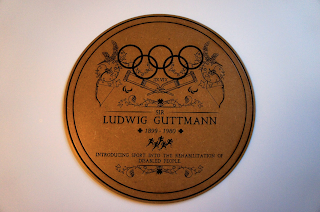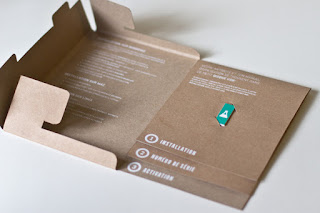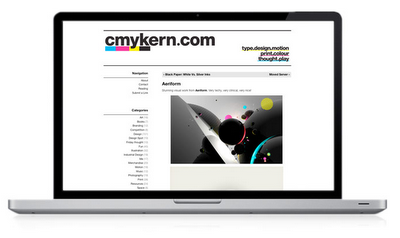“The role of design is to improve quality of life and, in challenging economic times, it can show people another way. Through innovation and creativity we can find tangible new solutions to everyday problems.” Martin Temple CBE, Chairman of the Design Council.
Task; Identify 5 examples of Professional practice that you have documented on your blog. Analyse the work in relation to which sectors it has been produced for. Evaluate the success to which the work fulfils its role from the point of view of Sectors and services.
1// Service Industries; The creative Industries; Advertising/ Graphic Design.
This example of work has been produced for Stoke Mandeville Hospital in Buckinghamshire and In my opinion I feel that this is a high quality design with a good standard of amenity, which would contribute positively to making Stoke Mandeville better for people 'enriching the existing'. It would improve the character and quality of the area, through the remembrance of World War 2 veterans & the efforts of pioneering Doctor... Sir Ludwig Guttmann.
Economic Sector/ Private Sector - Run by myself without government involvement.
Tertiary Sector - This example of professional practice has been produced to provide a service, for both entertainment and healthcare.
Quaternary Sector - You could argue that the plaque has been produced for the economy based on intellectual activities of culture and scientific research, raising awareness of the Doctor co-incides with raising awareness of the Paralympics, a sporting event designed for rehabilitation, which is ultimately funding scientific research and information technology (Prosthetics)
You could also bring in the activities associated with the manufacturing of the finished good, and in this sense I'd have to include the Secondary sector because it was produced using engineering.
2// Service Industries; ( primarily to generate revenue ) Sportswear industry, Wholesale and Retail. Creative Industries; Graphic Design, Advertising, Television.
The client for this piece of work is 'Nike' who intended to display the design during the 2010 football season. From the POV of sector and services I'd definitely say its a functional design, The San- Serif font displays a futuristic dynamic appearance which signifies that they're possibly trying to push boundaries as they're moving forward with their use of type. It's function is to represent their team accordingly.
Economic Sector/ Private Sector - Services are delivered for profit but may benefit society in terms of 'Footballer recognition'.
Tertiary Sector - Primarily...it serves a purpose. Produced on a commercial scale for retail and wholesale sales BUT also for the purpose of television entertainment/ media.
Secondary Sector - You could also argue that it's a manufactured finished good which involves an aspect of textile production.
It's quite a tricky one to place but the football kits also provide a service (football recognition) that is free until point of purchase, meaning this example could be included in the 'Governments departments' of the public sector 'Department for Culture Media and SPORT'
3// Service Industries; Transport/ ( Information & Way-finding ) Tourism, Transport, storage & communication. Creative Industries; Graphic Design, primarily used for the communication of visual material.
The image displays a range of Info-graphics developed for an Airport. Used for both decoration and orienteering.
Economic Sector/ Public Sector - Concerned with providing basic government owned services as oppose to revenue. The composition of public sector varies by country, but in most countries public sector services include public transit. Government departments include; Department of transport, Department for international development.
Tertiary Sector - Activities associated with transportation and services.
To a certain extent I'd say that these info graphics consisted of intellectual activities associated with our education and culture, so could they be fall into the Quaternary Sector? The info-graphics provide a visual representation of activities that we wouldn't understand without some prior knowledge of way-finding or culture.
4// Service Industries; Involved with food services. Creative Industries; Advertising, Graphic Design (Brand Identity)
The public sector would have little involvement in the actual development / manufacturing of this brand but because their producing food for consumers, they'd have to abide by regulations implemented by the government e.g. Department of Health, Department of food and Agriculture.
On the other hand, the majority of this brand will be ran by individuals for profit, hiring and creating jobs for who they see fit etc. This means its not state controlled making it mostly part of the Private sector.
Depending on the business's ethos, they're more than likely to buy from suppliers who're involved in harvesting produce and farming cattle (Butchers). Making it part of the Primary sector.
Tertiary Sector: the more obvious Industry sector, the business provides a restaurant, meaning it provides a service.
5// Service Industries; 'Transport, storage & communication'. This type of way-finding doesn't primarily fall under any sub-domains of the creative industry, but it does however 'advertise' on a non-creative level, it communicates with an audience, persuading them to follow the curve of the arrows.
No purpose for profit, making it part of the economy thats concerned with providing basic government/ state owned services (Public Sector) The way-finding provides a service thats free at the point of delivery, if someone was coming out of this junction who was a 'non-payer' they'd still be entitled to use the way-finding to orient themselves (A benefit to the whole of society) - Department for Local Government, Department of transport?
































